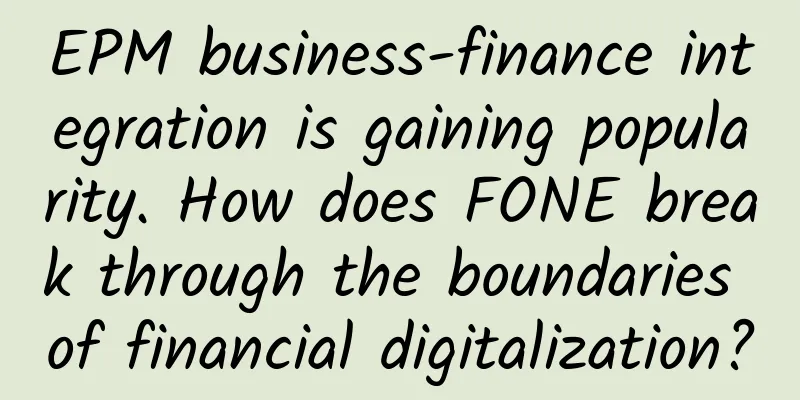Let's talk about the TCP/IP protocol processing flow

|
When a user uses a command with the TCP/IP application layer protocol, a chain of events is initiated. The user's command or message passes through the TCP/IP protocol stack on the local machine and then reaches the recipient's protocol over the network medium. The protocols at each layer on the sending host add information to the original data. As the user's commands pass through the protocol stack, the protocols at each layer of the sending host also interact with their counterparts on the receiving host. Data encapsulation and TCP/IP protocol stackA packet is the basic unit of information transmitted over a network and consists of at least a header containing the sending and receiving host addresses and a body containing the data to be transmitted. As a packet passes through the TCP/IP protocol stack, the protocols at each layer add or remove fields from the basic header. When the protocol on the sending host adds data to the packet header, the process is called data encapsulation. In addition, each layer has different terminology for the modified packet, as shown in the following figure. This article summarizes the life cycle of a data packet, from the time a user issues a command or sends a message to the time the corresponding application on the receiving host receives the data packet. Application layer - user initiated communicationThe history of data packets begins when a user on one host sends a message or issues a command that must access a remote host. The application protocol associated with the command or message formats the data packet so that it can be processed by the appropriate transport layer protocol, TCP or UDP. Suppose a user issues the rlogin command to log in to a remote host. The rlogin command uses the TCP transport layer protocol. TCP expects to receive data in the form of a byte stream containing the information in the command. Therefore, rlogin sends this data as a TCP stream. However, not all application layer protocols use TCP. Suppose a user wants to mount a file system on a remote host, thereby starting the NIS+ application layer protocol. NIS+ uses the UDP transport layer protocol. Therefore, the data packet containing the command must be formatted in the way that UDP expects. This type of data packet is called a message. Transport layer - data encapsulation beginsWhen data reaches the transport layer, the protocol at that layer starts the data encapsulation process. The final result depends on whether TCP or UDP processes the information. (1) TCP segmentation TCP is often called a "connection-oriented" protocol because it ensures that data is successfully delivered to the receiving host. The above diagram shows how the TCP protocol receives a stream from the rlogin command. TCP divides the data received from the application layer into multiple segments and attaches a header to each segment. The segment header contains the sender and receiver ports, segment ordering information, and a data field called a checksum. The TCP protocol on both hosts uses the checksum data to determine whether the data has been transmitted correctly. (2) Establishing a TCP connection TCP uses segments to determine if the receiving host is ready to receive data. When the sending TCP wants to establish a connection, it sends a segment called a SYN to the peer TCP protocol running on the receiving host. The receiving TCP returns a segment called an ACK to confirm the successful receipt of the segment. The sending TCP sends another ACK segment and then continues to send data. This exchange of control information is called a three-way handshake. (3) UDP packets UDP is a "connectionless" protocol. Unlike TCP, it does not check to make sure the data reaches the receiving host. Instead, UDP takes the message received from the application layer and formats it into UDP packets. UDP appends a header to each packet that contains the sending and receiving host ports, a field containing the packet length, and a checksum. The sending UDP process attempts to send a packet to the peer UDP process on the receiving host. The application layer determines whether the receiving UDP process acknowledges receipt of the packet. UDP does not require receipt notification. UDP does not use a three-way handshake. Internet LayerBoth TCP and UDP pass their segments and packets down to the Internet layer, where they are processed by the IP protocol. IP prepares them for delivery by formatting them into units called IP datagrams. IP then determines the IP addresses of the datagrams so that they can be delivered efficiently to the receiving host. (1) IP datagram In addition to the information added by TCP or UDP, IP also appends an IP header to the header of a segment or packet. Information in the IP header includes the IP addresses of the sending and receiving hosts, the length of the datagram, and the sequence order of the datagram. This information is provided if the datagram exceeds the byte size allowed for a network packet and must be fragmented. Data Link Layer - FramingData link layer protocols, such as PPP, format IP datagrams into frames. They append a third header and a footer to "frame" the datagram. The frame header includes a cyclic redundancy check (CRC) field that is used to check for errors as the frame travels across the network medium. The data link layer then passes the frame to the physical layer. Physical Network Layer - prepares frames for transmissionThe physical network layer on the sending host receives the frame and converts the IP address into a hardware address appropriate for the network medium. The physical network layer then sends the frame out over the network medium. How the receiving host processes the packetWhen a packet arrives at the receiving host, it passes through the TCP/IP protocol stack in the reverse order of the sender. The diagram above illustrates this path. In addition, each protocol on the receiving host strips off the header information that the peer on the sending host attached to the packet. Here is what happens:
|
<<: CAP, can it be without P? Did you know?
>>: Cloud Gateway for Home Computing Networks
Recommend
The ranking of countries with the fastest internet speeds in the world has been revealed!
Computers and the Internet are one of the greates...
TNAHosting: $5/month-4 cores/12GB/500GB/15TB/Chicago data center
TNAHosting is a foreign hosting company founded i...
In the era of intelligence, computing power is upgraded, and Huawei Cloud enables the intelligent transformation of the industry
[51CTO.com original article] Recently, Huawei hel...
CDN triggers a second revolution: from transmission services to edge computing
In the list of "Top 20 Technology Companies ...
Cisco pledges to be carbon neutral by 2040
In response to calls to limit global warming to 1...
LOCVPS: Hong Kong Cloud/Los Angeles Light Package is online, KVM monthly payment starts at 29.6 yuan
LOCVPS is a long-established Chinese VPS service ...
[11.11] Spinservers cloud server 50% off $19/month, dual core, 8G memory, 200G SSD, 10TB monthly traffic
spinservers has launched a promotion for Double 1...
After two weeks of remote work, do you still need an office?
【Abstract】If the Industrial Revolution drove peop...
Automotive Ethernet: Solving complex wiring harnesses and supporting more data
If you've ever had the chance to look at the ...
Shanxi's first "government cloud" platform launched in Xinzhou
Recently, with the "Xinzhou Public Trading P...
Accelerating NFV interoperability testing
Many service providers have deployed network func...
Huawei Global Analyst Conference 2017: Using cloud as the engine to promote global digital transformation
[51CTO.com original article] Although the 2017 Hu...
Comprehensive understanding of TCP/IP knowledge system structure summary
1. TCP Knowledge System We analyze the TCP knowle...
HostYun: Hong Kong CN2 GIA line VPS monthly payment starts from 22 yuan, AMD+M.2 SSD high performance
Recently, someone is looking for a Hong Kong CN2 ...









